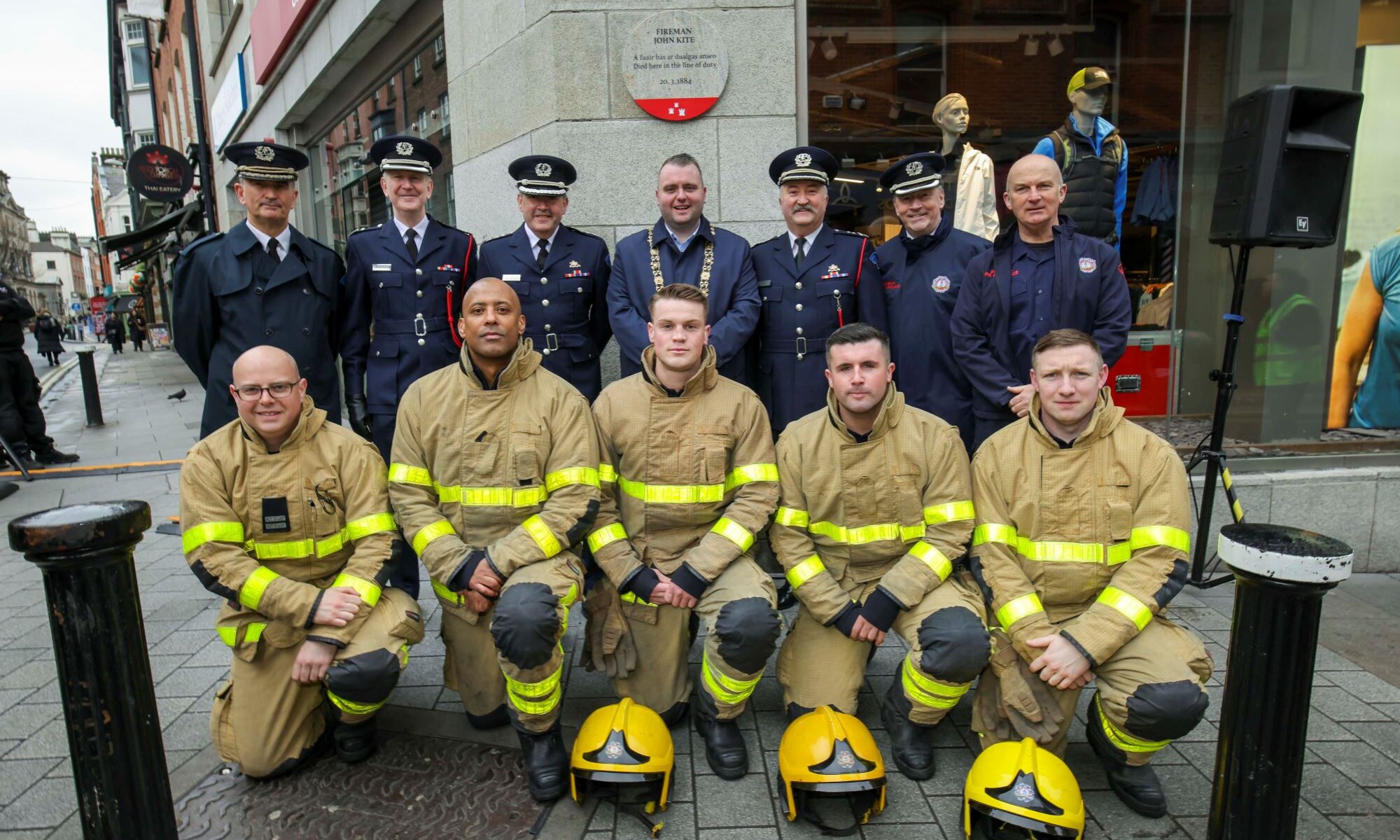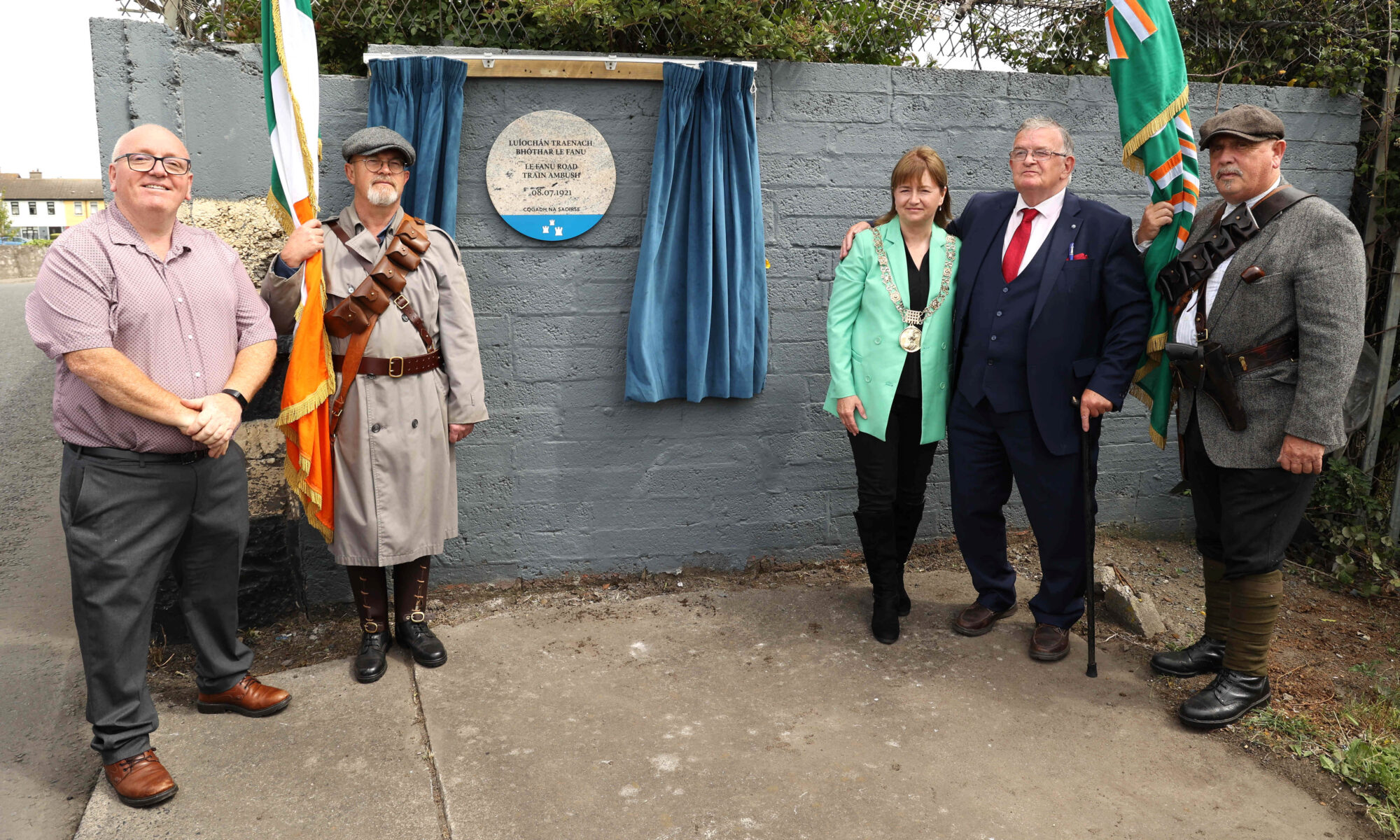The last major action of the Irish War of Independence, the Ballyfermot Train Ambush of July 1921, has been marked by a Dublin City Council Commemorative Plaque.
The commemorative plaque was unveiled by Lord Mayor Caroline Conroy on the railway bridge at Le Fanu Road, the site of the ambush.
Speaking at the unveiling, the Lord Mayor said, “That this ambush took place in a quiet place like Ballyfermot brings home the fact that the War of Independence came to involve all kinds of people and places. In erecting this plaque we remember the sacrifices made, the men who were involved, and the civilians who were caught up in the fighting”. The Lord Mayor thanked Iarnród Éireann for their co-operation in agreeing to have the plaque erected on the bridge.
On Friday, 8th July, 1921, a train carrying British troops, members of the Gordon Highlanders – military supplies, cars, donkeys and horses, as well as civilians, was ambushed as it passed under the railway bridge near the small hamlet of Ballyfermot.
In the 1920s, Ballyfermot was a rural area just outside of Dublin with local interest centred on the canal and the railway line.
The packed-train left Kingsbridge (Heuston) Station at 1pm, heading for the Curragh army barracks in Kildare.
Unknown to those on board, members of the 4th battalion of the Irish Republican Army (IRA), made up of locals from Ballyfermot, Inchicore, Drimnagh, Bluebell, and The Liberties, were waiting on what is now known as the Le Fanu Road Railway Bridge. Others, armed with small hand guns and grenades, locally made in the Inchicore Railway Works, had taken up positions on the hilly embankment along the railway tracks. A Thompson submachine gun was set up on the bridge itself. This was the first time that the IRA successfully used such a weapon.
The well-planned and executed operation at Ballyfermot was over in a few minutes, with one known civilian casualty, and many more injured.
Following the ambush, the burning and badly damaged train continued to Clondalkin Railway station for assessment. The injured and the traumatised civilians, many of whom had sought refuge under train seats and on the floor were disembarked. The military section of the train continued to the Curragh army barracks, where the burned-out shell was stored pending an investigation into events.
The evening papers of 8th July 1921 presented a split headline: one side announced ‘Train Attacked Near Dublin’ but the other, dominant, headline stated ‘Peace Conference Resumed – Mansion House’.
The Truce was formally declared the following Monday, 11 July, 1921.
Diarmuid O’Connor, a relative of the man who led the attack, spoke at the event, saying “I was delighted when I received word that Dublin City Council and Ballyfermot Heritage Group were placing a plaque on the railway bridge at Ballyfermot. I remember my uncle Padraig O Connor, who commanded this attack. He and his comrades lived on through difficult times and are remembered by their families”.
The plaque was proposed by the Ballyfermot Heritage Group who said, “We are delighted to be involved with Dublin City Council in the unveiling of the commemorative plaque on Le Fanu Railway Bridge in recognition of the ambush, an important part of the history of the state”.
The decision to erect the plaque was made by the Dublin City Council Commemorations & Naming Committee, whose chair, Councillor Micheál Mac Donncha, said, “The Commemorative Plaques Scheme allows the City to formally commemorate events which have made a significant contribution to the life of Dublin. We welcome suggestions from the public for people and events to be commemorated, and full details are on the Council website”.
Jim Meade, Chief Executive of Iarnród Éireann, said “Railways have a rich heritage, and are at the heart of our social history, never more so than during the time marked by the current Decade of Centenaries. As custodians of that heritage, we were pleased to be able to facilitate Dublin City Council’s Commemorative Plaques Scheme at Le Fanu Road Bridge.”
Dublin City Council historian-in-residence Cathy Scuffil has written an account of the ambush for the Dublin City Libraries’ blog, at https://dcpla.ie/3OJ9FrZ.


